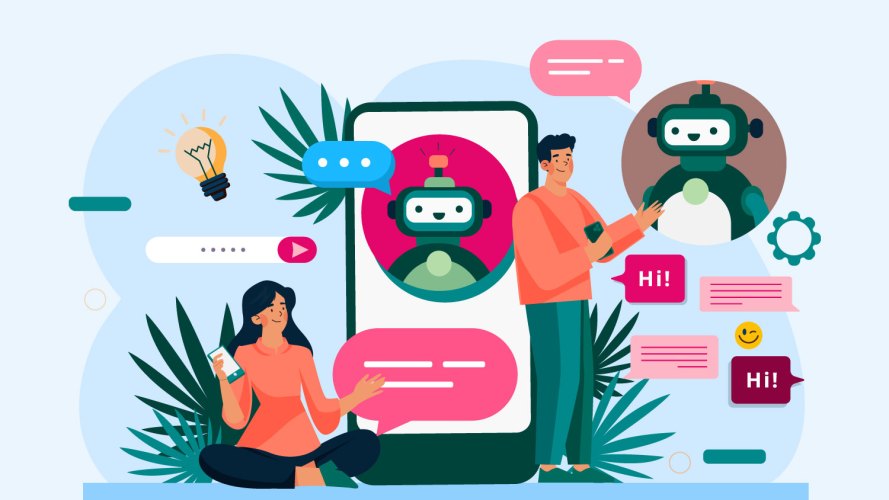What Is Customer Experience — and How Can You Improve It? Start With These 5 Steps

Customer experience includes any interaction your customers have with your brand. Here’s how to make those touchpoints count — every time.

Martin DuPont
The phrase “customer experience” gets thrown around a lot these days. But what does it really mean? That’s not as easy to answer as you might think. The concept is tough to define because it includes so many different aspects of the customer journey from the contact center to the field — and beyond.
But this much is clear: it can’t be ignored. Our research shows that 80% of customers say the experience a company provides is as important as its products and services. Let’s take a few minutes to review what customer experience really means, why it matters, and what you can do to make yours even better.
- What is customer experience?
- Why is customer experience important?
- Examples of good and bad customer experience
- How to measure customer experience
- 5 ways to improve your customer experience
Put AI, automation, and data to work
The right mix of customer service channels and AI tools can help you become more efficient and improve customer satisfaction. Our guide reveals how high-performing service orgs make it happen.



What is customer experience?
Customer experience (CX) includes every interaction a customer has with your brand, from the first point of contact to ongoing support. It’s the overall perception a customer forms based on their interactions with your marketing, products, services, and the way your team handles their needs. In other words, experience extends far beyond just service — from first impressions to long-term engagement.
Why is customer experience important?
Whether you operate in the business-to-consumer (B2C) or business-to-business (B2B) realm, customers’ expectations have never been higher. In fact, 63% of business buyers say most of their experiences fall short of what they know is possible. That matters because a great experience isn’t just a feel-good thing — it’s a major contributor to the long-term success of your business.
Here are just a few of the ways that a memorable customer experience can have a positive impact on your bottom line:
- Customer loyalty and retention: Positive experiences build loyalty. When customers have a seamless and satisfying experience, they’re more likely to become repeat customers and advocates for your brand.
- Brand reputation: The customer’s perception of your brand is shaped by their experiences. A positive CX contributes to a positive brand reputation, while a negative one can lead to reputational damage.
- Competitive differentiation: In a competitive market, where products and services are often similar, customer experience becomes a key differentiator. Brands that prioritize and excel in customer experience stand out from the crowd.
- Increase revenue: Happy customers are willing to spend more. When customers feel valued and satisfied, they’re more open to upselling and cross-selling.
- Reduced customer churn: By applying the principles of customer service, you can reduce the likelihood of customers switching to competitors. This leads to lower churn rates and a more stable customer base.
Essential elements of great experience
Our survey data shows that 65% of customers expect companies to adapt to their changing needs. But how can you make sure you’re meeting their expectations?
Here are a few examples of what many people would consider essential elements of a great customer experience, according to our research:
- 77% of customers expect to interact with someone immediately when they contact a company.
- 74% expect to be able to do anything online that they can do in-person or by phone.
- 70% expect all company representatives to have the same information about them.
- 79% expect consistent interactions across departments.
Sounds great, right? Unfortunately, here are some of the realities that many customers face:
- 56% of customers often have to repeat or re-explain information to different representatives.
- 55% say it generally feels like they’re communicating with separate departments, not one company.
- 61% say most companies treat them like a number.
The good news is that even a subpar customer experience can be turned around with the right customer support strategy. Our research shows that 75% of customers will forgive the mistakes of a company after receiving excellent customer service.
How to measure for success
By continuously assessing, adapting, and optimizing your service strategy, you’ll find new insights into the customer experience — and new ways to keep them coming back for more. Here are some of the most popular and useful methods for measuring CX:
- Customer satisfaction score (CSAT): CSAT surveys measure customers’ satisfaction with a specific interaction, product, or service. These surveys usually involve a simple question with a rating scale. For example, “How satisfied are you with your experience?”
- Net Promoter Score (NPS): NPS measures the likelihood of customers recommending your brand to others. It involves a single question: “On a scale of 0 to 10, how likely are you to recommend our product/service to a friend or colleague?”
- Customer Effort Score (CES): CES measures the ease with which customers can accomplish a task or resolve an issue. It often involves statements like, “The company made it easy for me to handle my issue.”
- Online reviews and feedback: Monitoring online reviews on platforms like Google, Yelp, or industry-specific sites provides valuable insights into customer sentiment and areas for improvement.
5 ways to improve your customer experience
Improving the customer experience starts with asking the right questions. How can you bring your data together? How can you stay one step ahead of the competition? And how can you equip your contact center and field service teams to meet customers’ changing expectations while also serving the needs of the business?
Here are five best practices for combining people, processes, and technology to deliver faster, more effective service at scale — with generative AI assisting you every step of the way.
- Understand the customer journey: Mapping the customer journey helps you identify touchpoints and potential pain points. A comprehensive understanding of the customer journey is foundational to enhancing CX.
- Empower your service teams from the contact center to the field: Invest in customer service training and empower your contact center and field service teams to handle a variety of situations with empathy and efficiency. A well-trained team can turn potentially negative experiences into positive ones.
- Leverage technology: Implement technology solutions like field service management software to enhance the customer experience. This could include chatbots for quick issue resolution, personalized communications powered by generative AI, and user-friendly interfaces for your digital platforms.
- Act on customer feedback: Regularly collect and analyze customer feedback from surveys, reviews, and other channels. Use this feedback to identify patterns, address recurring issues, and make informed decisions for improvement.
- Create a customer-centric experience: Foster a culture within your organization that prioritizes the customer. Ensure that every department understands its role in delivering a positive customer experience. This customer-centric mindset should permeate the entire organization.
Here’s the bottom line: customer experience isn’t just another buzzword. It’s more critical than ever to your ongoing success. By understanding what it means, how to measure it effectively, and what steps you can take to improve it, your team can lead the way to the future of customer service.
Supercharge your customer service with generative AI
You can scale your customer service with the power of generative AI, paired with your customer data and CRM. See how this technology improves efficiency in the contact center and increases customer loyalty.






























